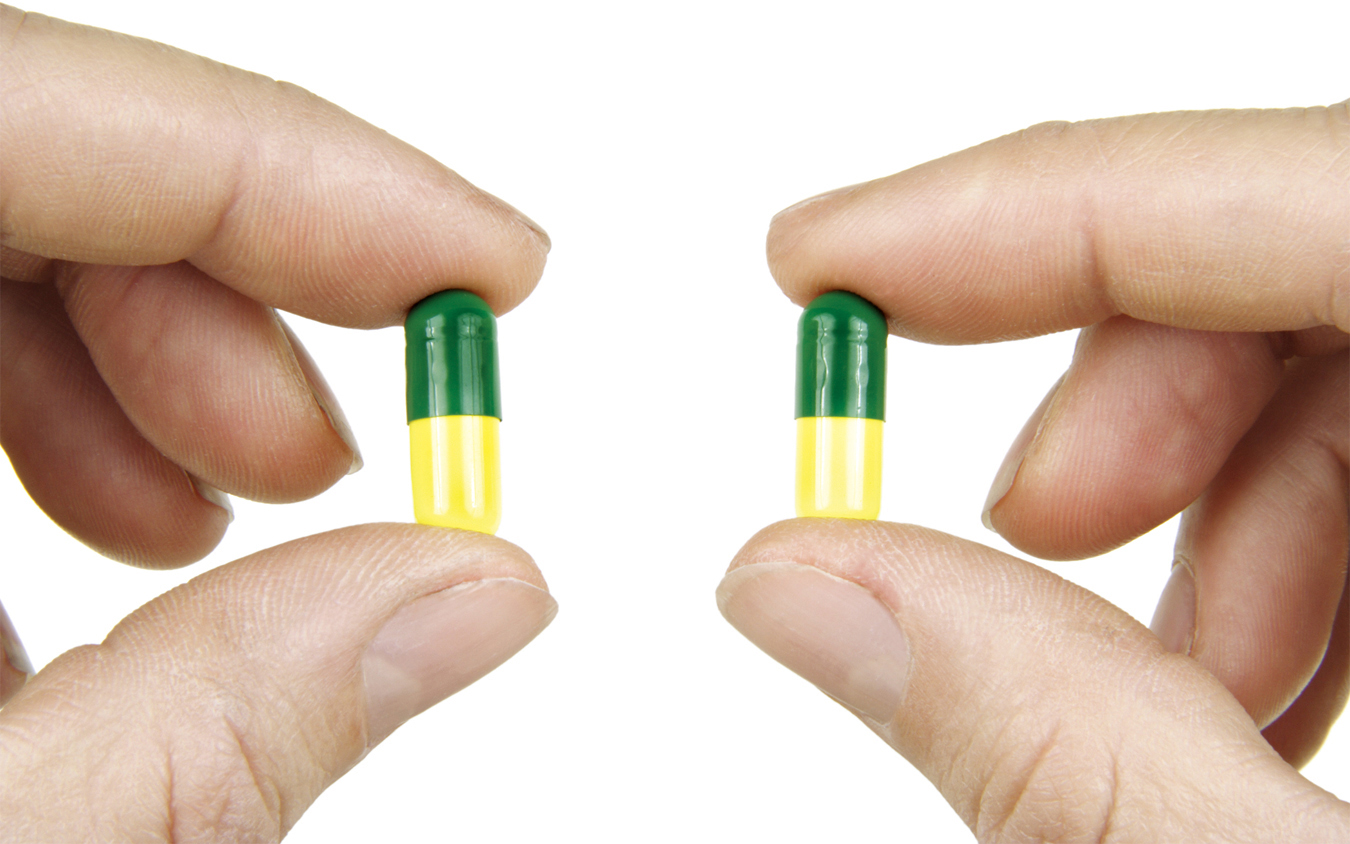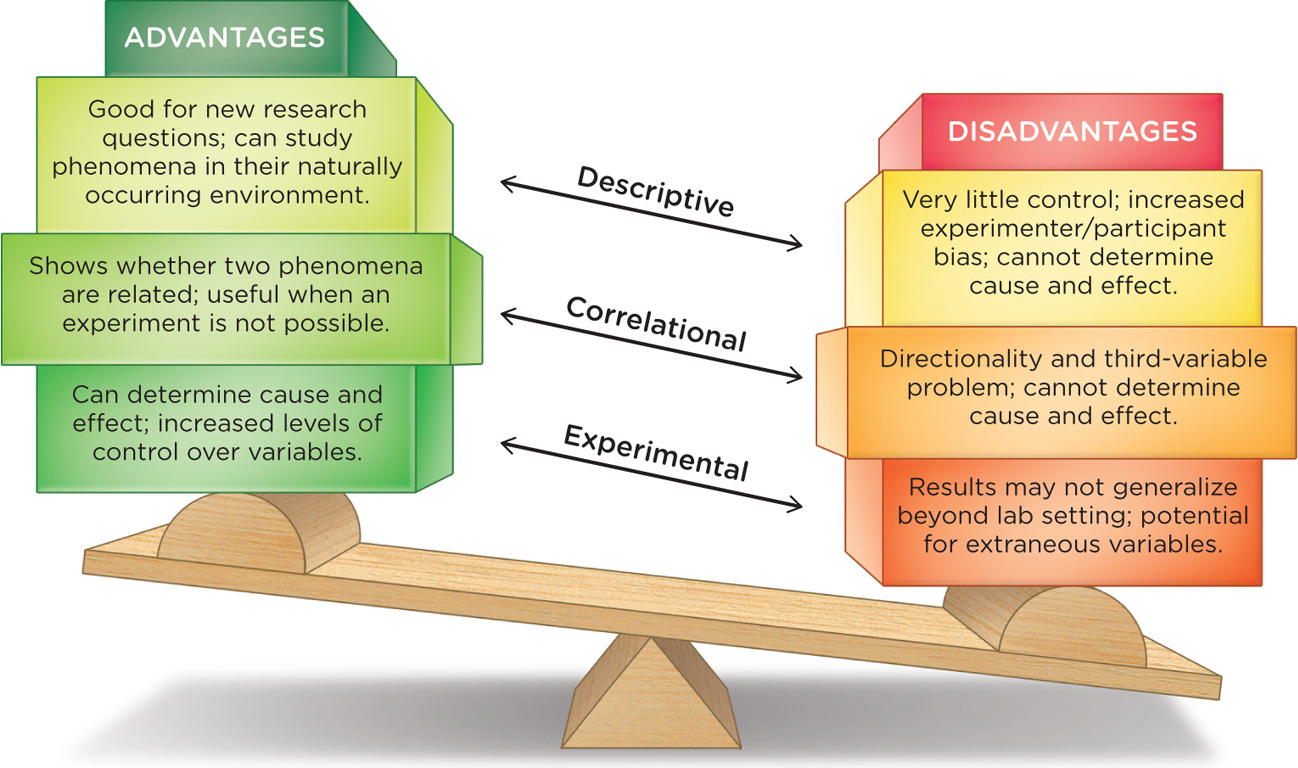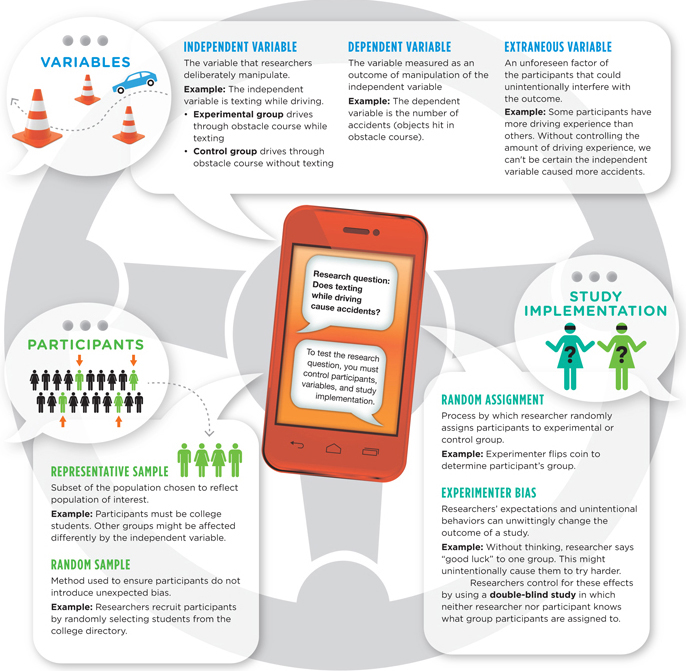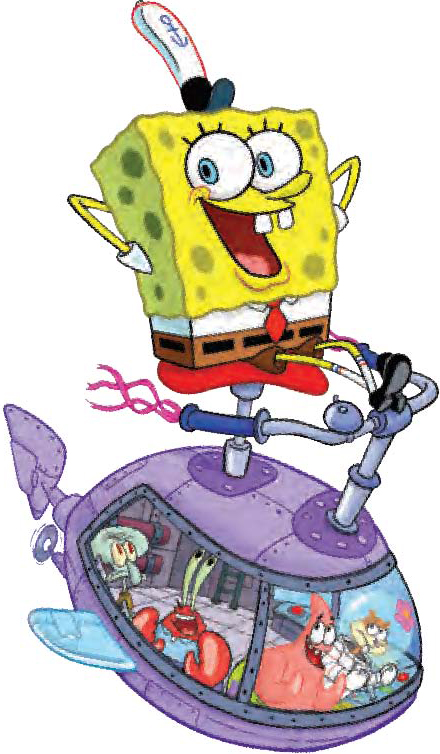Experimental Research
The nation of Chile went to heroic lengths to ensure that Los 33 made it out of the mountain alive. Most search-and-rescue missions are run by mine owners, but this was an extraordinary situation that demanded extraordinary measures. Lucky for the miners, Chilean President Sebastián Piñera decided that the government would lead the operation (Weiner, 2011, January 1). Engineers from the Chilean navy built the rescue capsule that ultimately lifted all 33 men back into the light of day, and the Health Ministry created a plan to care for the miners, which included voluntary psychological counseling for at least 6 months after the rescue (Kofman & Hopper, 2010, October 13; Kraul, 2010, October 11).
But the Chilean government was not in it alone. Governments, businesses, and individuals from all over the world flooded the Atacama Desert offering whatever help they could. Twenty privately run mining outfits deployed their employees and state-of-the-art drilling technology to help bore the escape tunnel; volunteers took charge of making over 500 daily meals for the miners’ family members (Los Angeles Times, 2010, October 12); and the Red Cross provided round-the-clock first aid and psychological support to the miners’ families (American Red Cross, 2010, October 13). Even a group from the National Aeronautics and Space Administration (NASA) showed up to lend a hand: two doctors, one engineer, and a psychologist named Albert Holland who had trained astronauts to cope with the stressful living conditions of outer space. The NASA crew was impressed with the efforts of the Chileans, but they also offered a few bits of advice, including a recommendation to increase the men’s daily intake of vitamin D (Prengaman, 2010, September 3; Spotts, 2010, September 7).
You may wonder what’s so special about vitamin D. The average person gets a substantial amount of vitamin D from the sun and, as you may recall, the miners were half a mile underground—where the sun doesn’t shine. When the sun’s UV rays strike the skin, its cells begin synthesizing vitamin D. (You also can obtain small amounts of this nutrient from a few foods, but not enough—unless your diet includes cod liver oil and lots of fatty fish.) Deprived of sunlight for weeks on end, the miners were at risk of becoming vitamin D deficient. Not a trivial matter, as this “sunshine vitamin” is essential for maintaining healthy bones, a strong immune system, and normal cellular activity. If you don’t get enough of it, you may be at risk for a variety of ailments, including osteomalacia (softening of the bones) and heart disease (Lee, O’Keefe, Bell, Hensrud, & Holick, 2008; Medline Plus, 2010). Preliminary studies even suggest that a lack of vitamin D may be linked to cognitive functioning and perhaps certain problems with cognitive performance (Przybelski & Binkley, 2007; Wilkins, Sheline, Roe, Birge, & Morris, 2006).

Imagine you are a psychologist who has been following the Chilean miner saga. You’ve read the news reports about NASA recommending more vitamin D, which makes you wonder if giving vitamin D supplements will, in fact, improve the men’s cognitive abilities. Here’s the hypothesis you come up with: If one group of miners is given vitamin D supplements and the other group of miners a sugar pill, those receiving the vitamin D supplement will show improvements in cognitive functioning.
Eager to begin your study, you ask the Chilean government for permission to study the cognitive effects of vitamin D supplementation on Los 33. Sadly, your request is promptly denied. Not to worry. You have another option that may be even better: taking your study to a laboratory setting. Performing research in a controlled laboratory setting has huge benefits. You have greater control over who participates in your study, freedom to control the variables you desire, and the ability to draw comparisons between groups that differ only with respect to your target variables. In other words, you have the opportunity to use the experimental method.
Experimental Method
LO 10 Explain how the experimental method relates to cause and effect.
At last, we arrive at the type of research design we have been alluding to all along, a design that reveals cause and effect. Unlike the descriptive studies discussed earlier, the experimental method can tell us about cause and effect, because it aims to ensure that every variable except those being manipulated by the researcher is held constant, or controlled (Infographic 1.5). To identify a particular cause of an outcome, we assign research participants to two or more groups, and with the exception of some sort of manipulation or treatment done by the experimenter, these groups are equivalent. If following the manipulation or treatment the groups differ on a measure of interest, we can say with confidence that the experimental manipulation caused that change. This allows researchers to observe the variable of interest without interference from other variables.
If you are having trouble understanding what it means to control variables, consider this analogy: You are outside a football stadium, desperately trying to follow a friend lost in a swarm of people. Everyone is moving in different directions, making it exceedingly difficult to pinpoint your friend’s location and direction of movement. But what if everyone in the crowd except your friend froze for a moment in time? Would it be easier to observe him now that he is the only one moving? This is similar to what researchers try to do with variables—hold everything steady except the variables they are examining.
Returning to the sun-deprived miners, let’s examine how you might design a simple research study using the experimental method to investigate the cognitive effects of a vitamin D boost. Your hypothesis is that participants housed in a laboratory setting without natural light who are given vitamin D supplements will perform better on a cognitive task than participants in the same laboratory setting who receive a sugar pill. Although we cannot study Los 33 per se, it’s possible for us to put together a group of men who are very similar to the miners in age, educational background, physical health, and other variables that might affect their cognitive performance, and then subject them to a prolonged period of sun deprivation. Next you would divide the men into two groups—one receives vitamin D supplements and the other gets a sugar pill—and compare their performance on various mental tasks after a designated amount of time has passed. If the group receiving the vitamin D performs better than the other group, then you can attribute the difference to vitamin D. Although this may sound fairly straightforward, there are still a few more things you need to know.
Random Assignment
Assigning participants to groups is a crucial step of the experimental process. Fail to assign participants in the correct way and your whole study is compromised. For this reason, researchers use random assignment to ensure that the likelihood of placement in a given group is identical for every participant. Randomly choosing which treatment the participants receive reduces the possibility of some participant characteristics influencing the findings. You may have noticed some similarities between random assignment and the “random sample” introduced earlier in the chapter. But here’s the difference: Random sampling is used at the onset of a study to gather participants from a larger population. Random assignment comes into play later, when you are assigning participants to different groups. You can flip a coin, roll dice, or use a computer to generate numbers, but the goal of random assignment is always the same: to ensure that the groups are roughly equal on all characteristics. If the groups are lopsided with respect to some variable, the results may be affected. Getting back to your study on vitamin D and cognition, imagine that you assigned all the highly educated participants to one group and less educated participants to the other. Might educational experience influence the results of a cognitive test? Perhaps. Random assignment helps reduce some of the interference resulting from these types of characteristics.
Experimental and Control Groups
Let’s assume you did use random assignment to divvy your participants into two groups. One will receive the treatment (a daily dose of vitamin D), and the other will receive no treatment at all (they will, however, be handed a sugar pill that looks identical to the vitamin D supplement). Those members of the group who get the treatment (the real vitamin D supplements) comprise the experimental group, and those participants who get the sugar pill are members of the control group (the group that does not receive the treatment). You may be wondering why the sugar pill is even necessary. We call this fake or “pretend” treatment a placebo (plə-′sē-′bō), and it is a key element of the experimental method. Our goal is to hide from participants whether they are receiving the treatment (in this case, the vitamin D). This is because human beings frequently feel better simply as a result of believing they are being treated. More on the peculiar placebo effect in a moment.
Independent and Dependent Variables
Let’s restate a point we already made earlier in the section, this time using our new vocabulary terms: The only difference between the experimental and control groups should be the variable the researchers are manipulating—in this case, vitamin D intake. The different treatments the two groups receive is called the independent variable (IV), because it is the one variable the researchers are deliberately changing (in this case, some participants get vitamin D, the others a placebo). In the experimental method, an independent variable is that which the researcher is manipulating, and due to the complex nature of human behavior, often more than one independent variable may be used. The dependent variable (DV) is the characteristic or response the researchers are trying to observe or measure. In the hypothetical study, the dependent variable is the participants’ performance on cognitive tests. Just remember, the independent variable is what is manipulated and the dependent variable is what is being measured as a result of that manipulation. Stated slightly differently: The dependent variable, in this case, performance on the cognitive tests, “depends” on or is caused by the treatment (either vitamin D or the placebo).

Extraneous Variables
Another issue that must be considered by researchers as they plan their experiment is making sure that extraneous variables are not allowed to interfere with their measures. Extraneous variables are characteristics of the environment or participants that potentially interfere with the outcome of the research. While conducting your study of vitamin D supplements, you discover that three of the participants are reacting to the artificial light in the lab, making it very difficult for them to sleep. And this sleeplessness can definitely influence performance on cognitive tasks. Unfortunately, you failed to consider this very important variable in your research design, making it an extraneous variable. Researchers have to carefully contemplate the different kinds of variables that might unintentionally influence the dependent variable.
There is a specific type of extraneous variable that can confound the results of an experiment. Confounding variables are a type of extraneous variables that change in sync with the independent variable, making it very difficult to discern which one is causing changes in the dependent variable. Imagine you house the participants in your study in a very nice lab setting, but because the lab can only hold half the participants at a time, you decide to wait and collect data from the control group later in the year. At that point, your lab assistant has gone on maternity leave, so you need to hire a new lab assistant, a young man who will administer the placebos to the control group. When the data are collected on cognitive performance, you can’t be sure whether differences between groups on test scores result from the vitamin D pills, or some variables related to the gender of the lab assistants or even the time of year that the data were collected. These other variables could be confounding variables.
The good news is that there are numerous ways of eliminating the influence of an extraneous variable. This is called controlling a variable. As we mentioned earlier, random assignment to the treatment and control groups can help to lessen the impact of such types of variables. In this example, that means ensuring both groups have approximately the same number of participants who are having trouble sleeping in the lab. Or, if you wanted to control how sleep impacts the outcome of your study, you could just remove the poor sleepers from your sample and not include their information in your statistical analyses.
If you succeed in holding all variables constant except the independent variable, then you can make a statement about cause and effect. Let’s say your study does uncover cognitive differences between the experimental and control groups. It is relatively safe to attribute that disparity to the independent variable. In other words, you can presume that the vitamin D caused the superior performance of the experimental group.
Double-Blind Study

Earlier in the chapter, we mentioned that deception can sometimes be useful in scientific research. You are about to learn why. One way researchers use deception is by conducting a single-blind study in which participants do not know what treatment they are receiving. An even stronger experimental design is a double-blind study, an experiment in which neither the participants nor the researchers working directly with those participants know who is getting the treatment and who is getting the placebo. In our example, neither the person administering the pills nor the participants would know who was receiving the vitamin D supplement and who was receiving the placebo. Keeping participants in the dark is relatively easy; just make sure the treatment and placebo look the same from the outside (here, the vitamin D and sugar pill look identical). Blinding the researchers is a little trickier but can be accomplished with the help of clever assistants who make it appear that all participants are getting the same treatment.
Thinking is Believing
There are some very compelling reasons for making a study double-blind. Prior research tells us that the expectations of the participants can influence the results. If someone hands you a sugar pill but tells you it is real medicine, you might end up feeling better simply because this is what you expect. Apparently, thinking is believing. When people ingest a placebo pill, they often get better even though the contents of the pill were inert. The placebo effect works through individual expectations for getting better, suggesting that the strength of our beliefs can change our behavior and physical outcome. The placebo effect has been shown to ease pain, anxiety, depression, and the symptoms of Parkinson’s disease. There are even some reports that, on occasion, the use of placebos has been linked to a reduction in the size of tumors (Niemi, 2009). Researchers believe that the placebo effect arises through both conscious expectations and unconscious associations between treatment cues and healing. One’s expectation of the effect of the placebo influences the actual effect.
Experimenter Bias

We’ve discussed the rationale for keeping participants in the dark, but why is it necessary to keep the researchers clueless as well? A great deal of evidence suggests that researchers’ expectations can influence the outcome of a study, a phenomenon known as experimenter bias. A researcher may unwittingly color a study’s outcome through subtle, verbal, and/or non-verbal communication with the participants, perhaps suggesting to them what the researcher hopes or believes may happen as a result of the experiment. Saying something like “I really have high hopes for this treatment we are giving you” might influence how the participant reacts to the treatment or describes its effect. The researcher’s value system may also impact the results in barely noticeable but very important ways. How the researcher frames questions, decides to test hypotheses, or interprets findings can be influenced by her particular beliefs and attitudes (Rosenthal, 2002b).
Congratulations! You have now learned the nuts and bolts of experimental research, one of psychology’s greatest myth-debunking, knowledge-gathering tools. This method gives us more control over variables than any other type of study we have discussed; it also stands out in its ability to establish cause and effect. However, like any scientific approach, the experimental method is not without its flaws. Laboratory settings are inherently unnatural and therefore cannot always paint an accurate picture of behaviors that would occur in a natural setting. Remember, when people know they are being observed, their behavior changes. Other weaknesses of the experimental method include cost (it’s expensive to maintain a laboratory) and time (collecting data in a laboratory setting can be much slower than, say, sending out a survey study). Figure 1.6 gives an overview of some of the advantages and disadvantages of the research methods we have described.
Now it’s time to test our understanding of the experimental method with the help of a sprightly yellow square named Sponge Bob.

INFOGRAPHIC 1.5: The Experimental Method: Are You in Control?
The experimental method is the type of research that can tell us about causes and effects. It is different from descriptive studies in that key aspects of an experiment—participants, variables, and study implementation—are tightly controlled. An experiment typically includes at least two groups—an experimental group and a control group. This allows the researcher to isolate the effects of manipulating a single variable, called the independent variable.
When is it important to use the experimental method? Imagine you want to know if laws that ban texting while driving are worthwhile. Does texting really cause more accidents? Perhaps texting is merely correlated with higher accident rates in certain populations, such as college students, because college students are both more likely to text and more likely to have accidents. In order to find out, you have to perform an experiment.

didn’t SEE that coming
Sponge Bob on the Brain
 A little television won’t hurt a child, will it? Kids’ programs are interspersed with lessons on colors, words, and numbers, and only run for periods of 20 to 30 minutes. It seems reasonable to assume that little snippets of TV can’t possibly have any measurable effect.
A little television won’t hurt a child, will it? Kids’ programs are interspersed with lessons on colors, words, and numbers, and only run for periods of 20 to 30 minutes. It seems reasonable to assume that little snippets of TV can’t possibly have any measurable effect.

When it comes to the rapidly developing juvenile brain, however, it’s probably not safe to assume anything. Consider the following controlled experiment examining the cognitive changes observed in preschool children after just 9 minutes of exposure to a talking yellow sponge zipping across a television screen.
TURNING YOUNG BRAINS TO “SPONGE”?
The research participants were 60 four-year-olds, most of whom came from White, upper-middle-class households. Researchers randomly assigned the children to one of three conditions: watching the extremely fast-paced cartoon SpongeBob SquarePants, viewing an educational program, or drawing with crayons and markers. Following 9 minutes of the assigned activities, the children took a series of four commonly used tests (for example, the Tower of Hanoi task) to assess their executive function—the collection of brain processes involved in self-control, decision making, problem solving, and other higher-level functions. The results were shocking: Children in the Sponge Bob group performed considerably worse than those in the other groups (Lillard & Peterson, 2011). Just 9 minutes of Sponge Bob produced a temporary lapse in cognitive function.
How do we know that this was not the result of a different variable, such as some children’s preexisting attentional issues or television-watching habits at home? Those factors were accounted for in the study. In an experimental design, researchers hold nearly all variables constant except the one they want to manipulate—the 9-minute activity, in this case. This is the independent variable (IV). That way, the researchers can be somewhat confident that changes in the IV are driving changes in the dependent variable (DV)—performance on the cognitive tests.
What aspect of the cartoon caused these effects is not yet known, but the researchers suspect that it has something to do with the show’s “fantastical events and fast pacing” (Lillard & Peterson, 2011, p. 648). Further studies are in the works, so stay tuned.
show what you know
Question 1.1
1. The experimental method can provide findings on the of variables.
- experimenter bias
- confounding
- random assignment
- cause-and-effect relationship
d. cause-and-effect relationship
Question 1.2
2. A researcher studying the impact of vitamin D on cognitive functioning gave supplements to the experimental group and a placebo to the control group. After 2 months, she tested the participants’ cognitive functioning, which is a measure of the ____________ variable.
- dependent
- independent
- extraneous
- confounding
a. dependent
Question 1.3
3. A study of preschool children looked at the impact of watching fast-paced cartoons on executive functioning. Half of the children were assigned to watch SpongeBob SquarePants in a room alone. The other half were assigned to draw for the same amount of time while sitting at a table with other children. The researcher mistakenly introduced a confounding variable, which in this case was:
- whether the child watched the cartoon or not.
- whether the child was alone or with others.
- whether the child was drawing or not.
- that both groups spent the same amount of time in their activity.
b. whether the child was alone or with others.
Question 1.4
4. Describe what a double-blind study is and explain why deception is necessary in this case.
In a double-blind study, neither the participants nor the researchers working directly with those participants know who is getting the treatment and who is getting the placebo. This type of study is designed to reduce expectations and biases that can arise when either participants or experimenters know what they’ve received or distributed. This use of deception is necessary so that neither experimenter nor participant consciously or unconsciously alters their behaviors, that is, unknowingly changes the outcome of the experiment.